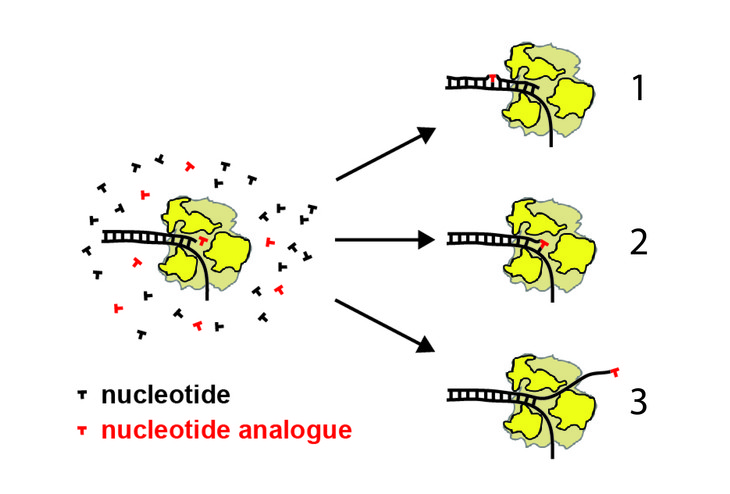“Magnetic Tweezers” Help Identify Mode of New Anti-Viral Drug Action
In a collaborative study, scientists from Penn State University, the Delft University of Technology in the Netherlands, Friedrich-Alexander University in Germany, have come together to study a new class of antiviral drugs that work by causing the virus’ replication machinery to pause and backtrack, preventing the virus from efficiently replicating.
The ability of viruses to evade the immune system, as well as pathogenic virulence, makes the study of viral infections and development of novel antiviral compounds essential. “Viruses are a massive threat to global public health,” said Craig Cameron, professor and holder of the Eberly Family Chair in Biochemistry and Molecular Biology at Penn State and a lead author of the paper. “Developing broad-spectrum antiviral drugs — ones that are effective against many different viruses — is vital to our ability to prevent or respond to outbreaks. We were able to demonstrate the mechanism of a newly developed class of antiviral drugs that are a potentially broad spectrum.”
An experimental technique called “magnetic tweezers” has been used to identify the mechanism of a new class of broad-spectrum antiviral drugs that block activity by causing the viral replication machinery to pause and backtrack.

Essentially all RNA viruses – whose genomes are composed of RNA rather than DNA – use an enzyme called RNA-dependent RNA polymerase to express genes and replicate their genome in order to make new copies of themselves. The polymerase enzyme is, therefore, an attractive target for developing broad-spectrum antivirals. In order to make more viruses, the RNA polymerase enzyme replicates the virus genome by incorporating nucleotides — the building blocks of RNA or DNA, which are made up of a base and a sugar — one at a time. For many antiviral drugs, alternative versions of these building blocks are designed such that when they are incorporated during replication, they somehow disrupt the process.
“To understand the disruption mechanism, we used magnetic tweezers that allowed us to monitor the progression of hundreds of individual RNA polymerase enzymes during the replication process in the presence of antiviral drugs,” said co-author Jamie J. Arnold, also of Penn State.
The magnetic tweezer assay works by tethering one end of hundreds of individual strands of RNA to a surface and attaching a magnetic bead to the other end. A magnet then holds the strands vertically while the researchers monitor the beads under a microscope. As the RNA polymerase builds new RNA, the length of the strand changes, moving the bead up or down. Because they can monitor hundreds of these processes simultaneously, the researchers are able to build datasets and develop sound statistical backing for their observations.
We used “a high-throughput magnetic tweezers platform to monitor the elongation dynamics of a prototypical RdRp over thousands of nucleotide-addition cycles in the absence and presence of a suite of nucleotide analog inhibitors,” the authors wrote. “We observed multiple RdRp-RNA elongation complexes; only a subset of which are competent for analog utilization. Incorporation of a pyrazine-carboxamide nucleotide analog, T-1106, leads to RdRp backtracking. This analysis reveals a mechanism of action for this antiviral ribonucleotide that is corroborated by cellular studies. We propose that induced backtracking represents a distinct mechanistic class of antiviral ribonucleotides.”
The researchers are excited by their findings and feel that the high-throughput magnetic tweezer assay is well poised to streamline antiviral drug development projects.























